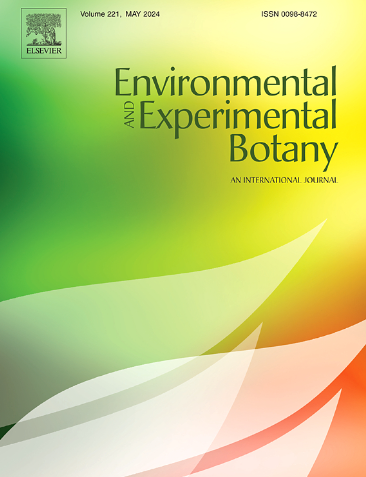磷能减轻微塑料污染对小麦和玉米的不利影响:对生长、光合作用和抗氧化防御的影响
IF 4.5
2区 生物学
Q2 ENVIRONMENTAL SCIENCES
引用次数: 0
摘要
农业土壤中的微塑料(MP)污染已成为一个重要的环境问题。磷(P)是植物生长的关键养分。农田主要施用磷肥,以达到农民期望的高产量。实验包括两个 MP 水平(0、1 % w/w)和两个 P 水平(0 mg kg-1、200 mg kg-1),以了解 MP 对小麦和玉米的影响是否受补充 P 供应的调节。MP降低了植株高度、光合色素和叶绿素荧光参数,同时增加了ROS和MDA含量。小麦和玉米在减轻 MP 污染对生长造成的损害方面表现出不同的策略:小麦主要增加了 AsA 的含量,而玉米则主要增强了 APX 的活性。通过改善小麦和玉米的光合色素、POD 和 PPO 活性,供给 P 可减轻 MP 污染效应。通过提高小麦 AsA-GSH 循环中的抗氧化酶活性,而提高玉米 AsA-GSH 循环中的非酶抗氧化剂含量,P 供应可减轻 MP 污染效应。结果表明,小麦和玉米抵抗MP污染的机制不同,磷的供给降低了小麦和玉米对MP污染的敏感性,其对小麦的调节作用优于对玉米的调节作用。我们发现磷通过不同的调节途径减轻微塑料对小麦和玉米的污染。本文章由计算机程序翻译,如有差异,请以英文原文为准。
Phosphorus mitigates the adverse effects of microplastics pollution on wheat and maize: Impacts on growth, photosynthesis, and antioxidant defense
Microplastics (MP) pollution in agricultural soils has become an important environmental problem. Phosphorus (P) is a key nutrient for plant growth. P fertilizers are mainly applied to agricultural fields to achieve the high production expected by farmers. The experiment included two MP levels (0, 1 % w/w) and two P levels (0 mg kg−1, 200 mg kg−1) in order to know whether MP effects on wheat and maize are regulated by supplemental P supply. MP decreased plant height, photosynthetic pigment, and chlorophyll fluorescence parameters, while increased ROS and MDA contents. Wheat and maize exhibited distinct strategies in mitigating growth damage caused by MP pollution: wheat primarily increased the AsA contents, while maize predominantly enhanced APX activity. P supply alleviated the MP pollution effect by improving photosynthetic pigments, POD, and PPO activity in wheat and maize. P supply alleviated the MP pollution effect by improving antioxidant enzyme activities in the AsA-GSH cycling in wheat, while increasing non-enzymatic antioxidant contents in the AsA-GSH cycling in maize. The results showed that wheat and maize resisted MP pollution by different mechanisms, and P supply reduced the sensitivity of wheat and maize to MP pollution and its regulatory effect on wheat was better than that on maize.
Synopsis
The response of different plants under the same microplastic and phosphorus conditions is limited. We find phosphorus alleviates microplastics pollution on wheat and maize through different regulatory routes.
求助全文
通过发布文献求助,成功后即可免费获取论文全文。
去求助
来源期刊

Environmental and Experimental Botany
环境科学-环境科学
CiteScore
9.30
自引率
5.30%
发文量
342
审稿时长
26 days
期刊介绍:
Environmental and Experimental Botany (EEB) publishes research papers on the physical, chemical, biological, molecular mechanisms and processes involved in the responses of plants to their environment.
In addition to research papers, the journal includes review articles. Submission is in agreement with the Editors-in-Chief.
The Journal also publishes special issues which are built by invited guest editors and are related to the main themes of EEB.
The areas covered by the Journal include:
(1) Responses of plants to heavy metals and pollutants
(2) Plant/water interactions (salinity, drought, flooding)
(3) Responses of plants to radiations ranging from UV-B to infrared
(4) Plant/atmosphere relations (ozone, CO2 , temperature)
(5) Global change impacts on plant ecophysiology
(6) Biotic interactions involving environmental factors.
 求助内容:
求助内容: 应助结果提醒方式:
应助结果提醒方式:


